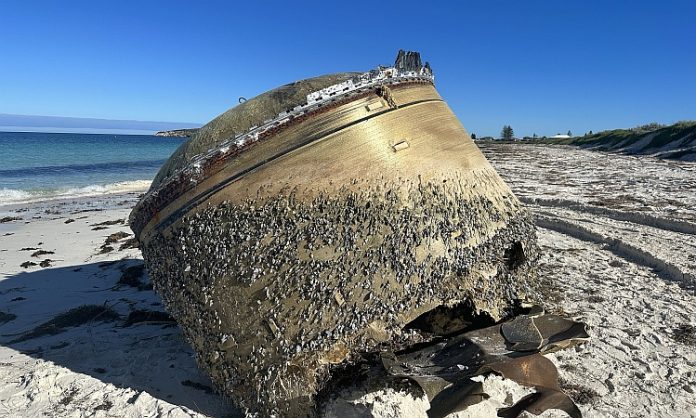Chennai: Indian Space Research Organisation (ISRO) on Tuesday said that it cannot confirm or deny whether the huge object, which had been found near the beach in Australia was part of its Polar Satellite Launch Vehicle (PSLV) rocket.
A senior official of ISRO, maintaining anonymity said, “We cannot confirm or deny anything about the object without seeing it in person and checking it. First the Australian space agency has to send a video of the object. We have to see the markings if any on it.”
Also Read: ISRO’s lunar mission: Chandrayaan-3 lifts off, landing on Aug 23-24
He said that the Australian space agency needed to move the object to a different place. “If need be, ISRO officials can go there to confirm whether it belongs to an Indian rocket,” he added.
There is talk amongst the space sector officials and enthusiasts that the huge metallic object that washed ashore in Australia was part of India’s PSLV rocket that went up long back. The ISRO official added that the Australian Space Agency has approached the Indian space agency in this regard.
Also Read: ISRO’s PSLV successfully places EOS, 8 nano satellites in space
“We are currently making enquiries related to this object located on a beach near Jurien Bay in Western Australia. The object could be from a foreign space launch vehicle and we are liaising with global counterparts who may be able to provide more information,” the Australian Space Agency tweeted.
“As the origin of the object is unknown, the community should avoid handling or attempting to move the object. If the community spots any further suspected debris they should report it to local authorities and notify the Australian Space Agency via [email protected],” the Australian space agency added.
Also Read: NASA, ISRO to launch Nisar satellite for dipper study of earth
As closer look at the picture shows lots of barnacles on the metallic object which in a way proves that it must have been a very old one and not part of any rocket that was launched recently, including India’s LVM3 that carried Chandrayaan-3 spacecraft.




